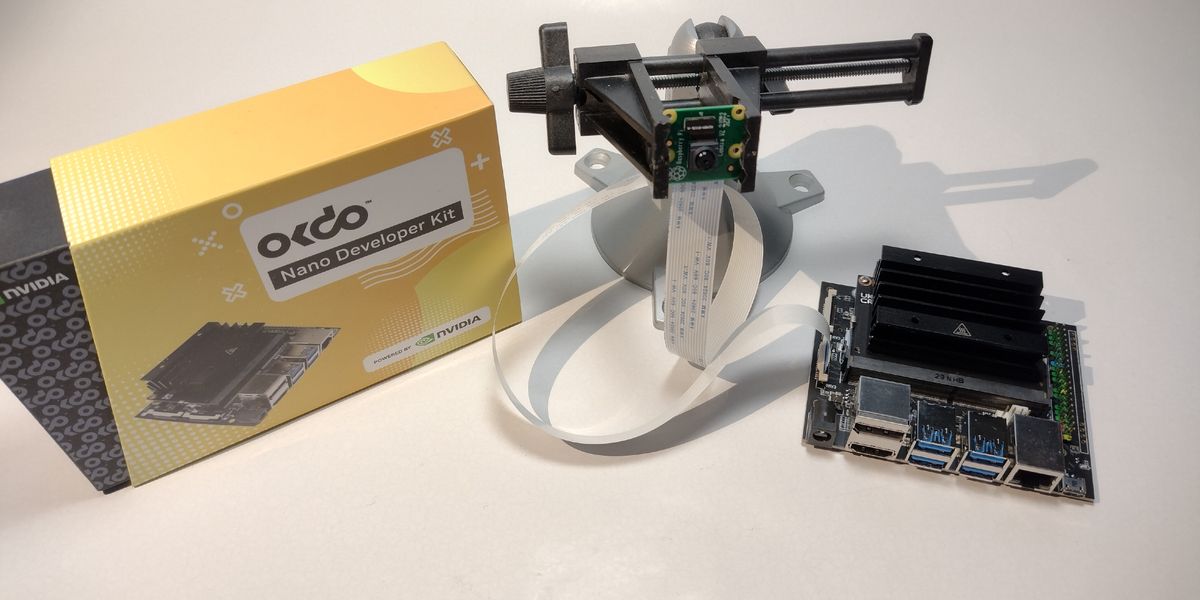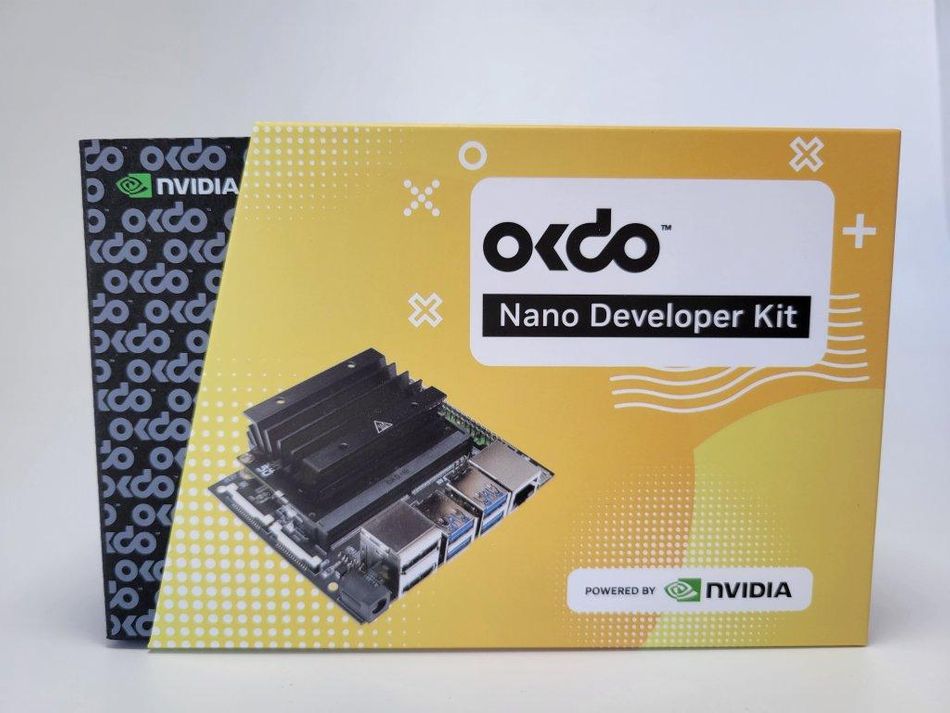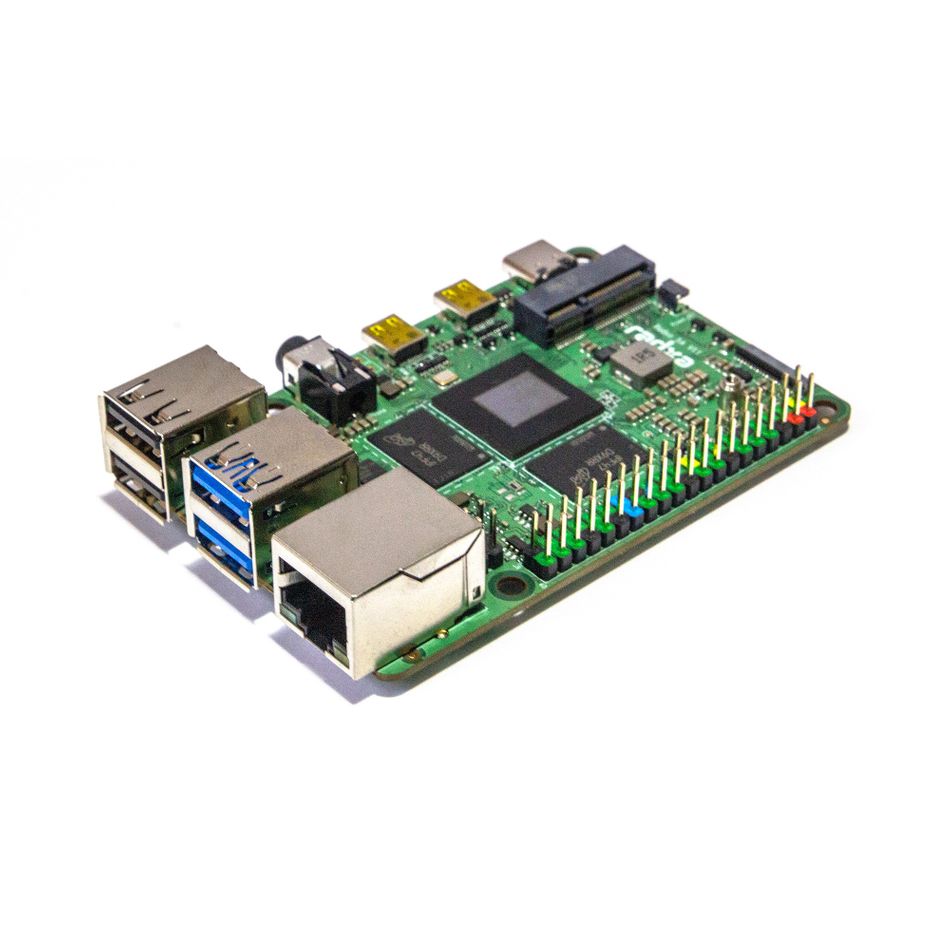Exploring the Frontier of Edge AI: Top 5 Single Board Computers (SBCs)

Dive into the future of Edge AI with an in-depth look at the top 5 AI Single Board Computers shaping tomorrow's tech.
Edge AI embodies a paradigm shift in deploying artificial intelligence, marking a significant leap from centralised cloud processing to local, instantaneous data analysis directly on edge devices. This innovative approach allows devices to process and analyse data in real-time, vastly enhancing operational efficiency, reducing latency, and preserving privacy. Edge AI integrates AI algorithms within devices like smartphones, IoT sensors, and more, enabling these devices to make independent decisions without constant cloud connectivity.
Edge AI has enabled the integration of real-time AI applications. By facilitating local processing, edge AI addresses critical challenges such as bandwidth limitations and privacy concerns, fostering the development of responsive and intelligent solutions across diverse domains. The shift towards edge AI was propelled by the increasing demand for real-time data processing and the exponential growth in data generation.
Today, specialised AI chips and advanced computing hardware have enabled edge devices to perform complex computations locally. As edge AI continues to evolve, it paves the way for more sophisticated, autonomous applications, revolutionising industries and enhancing daily life with smarter, more efficient solutions.
In the following sections, we will delve into the criteria for selecting AI SBCs, highlight the top 5 AI SBCs revolutionising different AI applications, explore future trends in edge AI and SBCs, and conclude with insights on the progression of edge AI and the transformative role SBCs play in shaping its future.
The Role of SBCs in Edge AI
Single-board computers (SBCs) have become fundamental in Edge AI due to their compact, efficient, and powerful computing capabilities. SBCs integrate all computer components onto a single circuit board, including CPU, memory, I/O ports, and sometimes GPUs, making them ideal for edge computing applications where space and power efficiency are paramount.
SBCs play a crucial role in Edge AI by providing the computational power necessary for AI algorithms to run locally on devices. This local processing capability is essential for applications requiring real-time decision-making, as it significantly reduces latency compared to cloud-based processing. Additionally, SBCs can operate independently of constant cloud connectivity, enhancing the reliability and responsiveness of AI applications in various settings, such as industrial automation, smart homes, and autonomous vehicles.
One of the primary advantages of using SBCs in Edge AI projects is the reduction in latency. Since AI processing occurs directly on the SBC, data does not need to travel over networks to be processed, allowing for near-instantaneous responses. This is particularly beneficial for applications where time is critical, such as in autonomous driving or emergency response systems.
Moreover, SBCs contribute to lower bandwidth costs and increased privacy. By minimising data transmission to the cloud, SBCs reduce the need for extensive network bandwidth, lowering operational costs. Furthermore, processing data locally on the SBC enhances privacy and security, as sensitive information does not need to be sent over potentially insecure networks.
Enhanced Capabilities and Efficiency
SBCs like the AMD Ryzen Embedded series exemplify the advanced capabilities and efficiency that modern SBCs bring to Edge AI applications. These SBCs leverage cutting-edge processor architectures like AMD's Zen and Vega to deliver high-performance processing and graphics capabilities within a low-power envelope suitable for rugged-edge applications. Their support for multi-display configurations and extended operational temperatures make them versatile for various industrial and commercial applications.
Furthermore, SBCs are designed with scalability, featuring rich I/O capabilities and support for various expansion options. This allows for integrating additional functionalities and connectivity options, catering to the specific needs of different Edge AI applications.
Criteria for Selecting AI SBCs
Selecting the right single-board computer (SBC) for AI projects involves considering several critical factors to ensure the device meets the specific requirements of your application. Here are the key criteria to guide your selection:
Computational Power
The CPU and GPU capabilities of an SBC are paramount, especially for processing AI and deep learning workloads. High-performance SBCs like the Nvidia Jetson AGX Xavier offer robust computational power with ARM CPUs and Volta GPUs, making them suitable for intensive applications in manufacturing and agriculture.
I/O Capabilities
The variety and arrangement of input/output ports determine how well an SBC can interact with other devices and sensors. Essential ports include HDMI, USB, Ethernet, and Micro-SD card slots. Your project's needs will dictate the specific I/O requirements, such as multiple USB ports for connecting peripherals or HDMI for display outputs.
Compatibility with AI Frameworks
Software and operating system compatibility is crucial for running AI algorithms efficiently. SBCs like the Raspberry Pi and BeagleBone AI support a range of Linux distributions. In contrast, others like UDOO Bolt and LattePanda can run full-fledged x64 operating systems like Windows 10, offering greater software development and deployment flexibility.
Cost
Price is a significant consideration, with options ranging from affordable models like the Raspberry Pi to more expensive, high-powered boards like the Nvidia Jetson series. The budget for your project will often narrow down your choices, balancing cost against the required computational power and features.
Community Support and Resources
A vibrant community and readily available resources can greatly facilitate the development process. Platforms with large user bases, like the Raspberry Pi, have extensive documentation, tutorials, and forums where you can find support and inspiration from other developers.
When selecting an SBC for your AI project, it's important to carefully evaluate these criteria for your project's specific needs and goals. This careful consideration will ensure you choose an SBC that fits your budget and provides the necessary computational power, connectivity options, software compatibility, and community support to make your project successful.
Top 5 AI SBCs for Different AI Applications
OKdo Nano C100 Developer Kit
The OKdo Nano C100 Developer Kit, powered by the NVIDIA Jetson Nano module, is a high-performance AI development platform designed for various applications, from machine learning and computer vision to robotics and healthcare. It combines robust processing power, extensive connectivity options, and efficient power consumption within a compact footprint, making it an ideal tool for developers, makers, and learners exploring the boundaries of AI.
Overview and Technical Specifications
The OKdo Nano C100 Developer Kit features a quad-core ARM A57 CPU running at 1.43 GHz and a 128-core Maxwell GPU, ensuring smooth processing of complex AI models and algorithms. It has 4 GB 64-bit LPDDR4 memory, providing ample bandwidth for multitasking and high-performance computing tasks. It includes 16GB eMMC storage, with additional support for microSD cards not included in the kit. The device is compact, measuring 100 mm x 80 mm x 29 mm, and is designed for energy efficiency, with a minimal power footprint suitable for battery-operated projects.
AI Applications and Use Cases
The OKdo Nano C100 Developer Kit is tailored for AI development and can run multiple neural networks in parallel or processing large datasets with its powerful CPU and GPU combo. It supports modern AI workloads, including object detection, segmentation, and speech processing. With support for multiple cameras, it can handle advanced computer vision projects, making it suitable for robotics, smart surveillance, and interactive installations. Its high-performance capabilities also extend to healthcare applications, where it can process medical images or assist in patient monitoring systems.
Pros and Cons for Engineers
Pros:
Powerful Processing Capabilities: The ARM CPU and Maxwell GPU combination allows for efficient handling of complex computations and AI workloads.
Energy Efficient: Designed for low power consumption, making it suitable for portable and remote applications.
Compact and Versatile: Its small form factor and comprehensive I/O options make it ideal for a wide range of applications in AI and IoT.
Cons:
Storage Limitations: Comes with 16GB eMMC, which may require external storage solutions like microSD cards for larger projects.
Learning Curve: The comprehensive features and capabilities might present a steep learning curve for beginners.
For those looking to dive into AI development with a robust, efficient, and versatile platform, the OKdo Nano C100 Developer Kit offers a compelling solution. Its balance of performance, connectivity, and compactness opens up many possibilities for innovative AI applications across various domains.
ROCK 5 AIO Edge AI Media Board
Overview and Technical Specifications
The ROCK 5 AIO Edge AI Media Board is a high-performance, cost-effective solution for Edge AI applications. It boasts a Rockchip 1808 SoC with dual low-power cores, 1GB of RAM, and 8GB of eMMC storage. Key features include a 3 TOPs NPU, which supports deep learning frameworks like TensorFlow and PyTorch, and multimedia capabilities with video decoder and encoder. Its compact size (96mm x 76mm) and support for USB-C power supply, WiFi, PoE, and Bluetooth 4.0 make it suitable for various applications.
AI Applications and Use Cases
The ROCK 5 AIO Edge AI Media Board is designed for Edge AI applications requiring real-time pattern detection and automated IoT workflows. Its video and audio capabilities and AI make it suitable for event-driven dataset transformation, surveillance, and other IoT solutions where real-time data processing and AI inference are critical.
Pros and Cons for Engineers
Pros:
High scalability and cost-effectiveness for Edge AI applications.
The compact size allows for easy integration and deployment.
Supports a wide range of deep learning frameworks.
Cons:
Limited RAM (1GB) may restrict the complexity of the AI models that can be run directly on the device.
ROCK 5A
Overview and Technical Specifications
The ROCK 5A, developed by Radxa, is a powerful single-board computer (SBC) based on the Rockchip RK3588S. It features an octa-core processor (4x Cortex-A76 and 4x Cortex-A55) and offers options for 4GB, 8GB, or 16GB of LPDDR4x RAM.
In addition to its powerful octa-core processor and versatile memory options, the ROCK 5A by Radxa stands out with its dedicated Neural Processing Unit (NPU), which delivers up to 6 TOPS (Tera Operations Per Second) of performance. This feature significantly enhances the board's ability to perform AI and machine learning tasks, making it highly suitable for applications requiring rapid data processing and real-time AI inference.
The board supports up to 8K@60 HDMI output and has multiple I/O capabilities, including MIPI DSI, MIPI CSI, USB ports, and a 2.5 GbE LAN. It also accommodates power supplies through USB Type-C PD and Qualcomm Quick Charge, making it a versatile choice for developers.
AI Applications and Use Cases
With its high-performance specs, the ROCK 5A is suited for a wide range of AI and IoT applications. Its processing power and RAM options make it capable of handling complex computations needed for edge computing, artificial intelligence, cloud computing, and intelligent surveillance.
Pros and Cons for Engineers
Pros:
Versatile with high processing power, suitable for intensive AI applications.
Comprehensive connectivity options support a wide range of use cases.
Cons:
Higher RAM options can significantly increase the cost.
External cooling methods may be necessary in high-performance applications.
NVIDIA Orin
Overview and Technical Specifications:
NVIDIA Orin, specifically the Jetson AGX Orin modules, represents a significant leap in AI computing at the edge, offering up to 275 TOPS of AI performance. These modules are designed for server-class AI performance in compact, power-efficient form factors suitable for autonomous machines. They support a broad range of power configurations between 15W and 60W, allowing for flexibility depending on the application needs. This performance level marks an 8X improvement over its predecessor, Jetson AGX Xavier, within the same form factor, catering to the next generation of robotics and autonomous systems.
AI Applications and Use Cases
Jetson AGX Orin is a powerhouse for embedded vision applications requiring intense processing capabilities, such as autonomous vehicles, robotics, and AI-based camera systems. It's particularly well-suited for applications that demand real-time decisions using edge processing, like autonomous mobile robots (AMRs) for warehouse automation, autonomous tractors for precision agriculture, and advanced people detection systems for security and surveillance. The processor's ability to handle multiple high-resolution camera feeds simultaneously makes it ideal for applications involving complex vision processing tasks.
Pros and Cons for Engineers
Pros:
Exceptional AI performance of up to 275 TOPS enables concurrent handling of multiple AI inference pipelines.
Compatibility with the same AI software and workflows used across NVIDIA platforms facilitates development and deployment.
Cons:
High performance comes at a higher cost, potentially making it overkill for simpler applications that do not require intense processing power.
Depending on the use case, the power consumption (15W to 60W) may require careful thermal management solutions.
NVIDIA Orin's cutting-edge capabilities make it a game-changer for AI at the edge, especially in robotics, autonomous vehicles, and smart cities, driving innovations previously impossible due to computational limitations. Its integration into systems promises to enhance next-generation edge AI-powered applications' performance significantly.
BeagleV® Ahead
Overview and Technical Specifications
The BeagleV® Ahead is an open-source single-board computer (SBC) embracing the RISC-V architecture. It's powered by the Alibaba T-Head TH1520 SoC, featuring a quad-core 64-bit RISC-V processor, making it a cost-effective option for developers, hobbyists, and researchers keen on exploring RISC-V technology. This SBC includes 4GB LPDDR4 RAM and 16GB eMMC storage and supports a range of connectivity options, including WiFi, Bluetooth 5.2, Gigabit Ethernet, and more. It's compatible with Linux, with Yocto pre-installed, and prototypes of Ubuntu and Fedora are available.
AI Applications and Use Cases
BeagleV® Ahead's powerful processor and 4 TOPS NPU suit AI and machine learning applications, especially in IoT devices, robotics, and embedded systems. Its open-source design and Linux compatibility offer a versatile platform for developing AI-driven projects, from voice recognition systems to autonomous vehicles.
Pros and Cons for Engineers
Pros:
Powerful Processing Capabilities: Its quad-core RISC-V processor and NPU offer robust computational power for handling complex AI tasks.
Open-Source and Linux-Compatible: A familiar development environment supports collaboration and innovation within the RISC-V community.
Cons:
Limited Ecosystem: As a relatively new platform, RISC-V's ecosystem is less mature than other architectures, potentially limiting available software and hardware support.
Specialised Use Case: Primarily geared towards developers interested in RISC-V and AI applications, which might not cater to all interests or requirements.
Despite the growing but still emerging support ecosystem for RISC-V-based platforms, these attributes underscore the BeagleV® Ahead as a forward-thinking choice for exploring AI and IoT innovations.
Future Trends in Edge AI and SBCs
As edge computing and Edge AI technologies rapidly evolve, we are on the brink of witnessing transformative shifts in single-board computers (SBCs) tailored for edge AI applications.
The integration of AI capabilities directly onto SBCs is anticipated to improve dramatically, thanks to advancements in microprocessor technologies, enabling more sophisticated and energy-efficient AI algorithms to run at the edge. This evolution is crucial for reducing latency, improving data security, and enabling real-time processing and decision-making across various industries.
Moreover, the development of specialised design methodologies and frameworks, such as TensorFlow Lite, Arm NN SDK, and Nvidia TensorRT, is expected to ease the deployment of AI models on edge devices, fostering innovation and expanding the potential applications of edge AI. As these technologies mature, we will likely see SBCs becoming even more powerful, versatile, and crucial in delivering the next generation of AI applications at the edge.
Conclusion
The future of edge AI is promising, with SBCs evolving to accommodate the increasing demands of edge computing, supported by the development of more efficient AI models and the proliferation of IoT devices. Integrating advanced AI capabilities into SBCs is more than just reshaping the computing landscape. Still, it is also setting the stage for a new era of intelligent, autonomous systems capable of operating with unprecedented efficiency and reliability. As we move forward, the synergy between edge AI and SBCs will undoubtedly play a pivotal role in shaping the future of technology, driving innovation, and unlocking new possibilities across many industries.
References
Enabling Design Methodologies and Future Trends for Edge AI: Specialization and Co-design
Edge AI: The Next Generation Of Artificial Intelligence For IoT Applications
Okdo Nano C100 Developer Kit powered by NVIDIA® Jetson Nano Module
OKdo Nano C100 Developer Kit powered by NVIDIA® Jetson Nano Module - SB Components
Arduino Edge Control: Remote Monitoring and Control Solution from Arduino Pro
Popular embedded vision use cases of NVIDIA® Jetson AGX Orin™
https://docs.radxa.com/en/rock5/rock5a/getting-started/overview
https://www.electromaker.io/blog/article/how-to-pick-the-best-single-board-computer-fit-needs
https://roboticsbiz.com/best-single-board-computers-sbc-for-robotics-projects/






